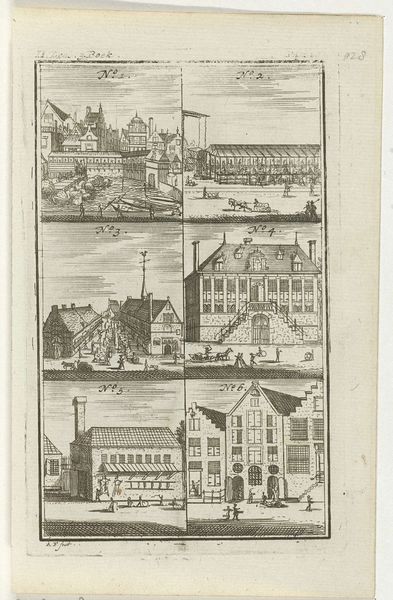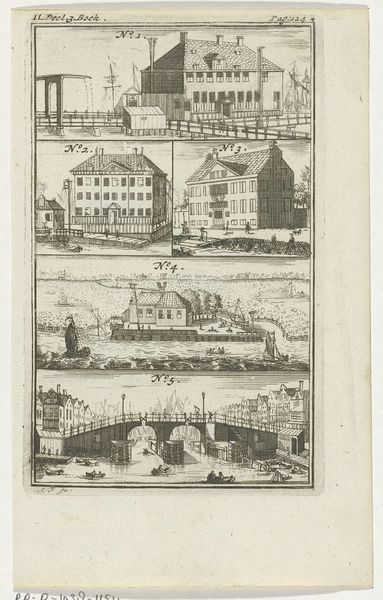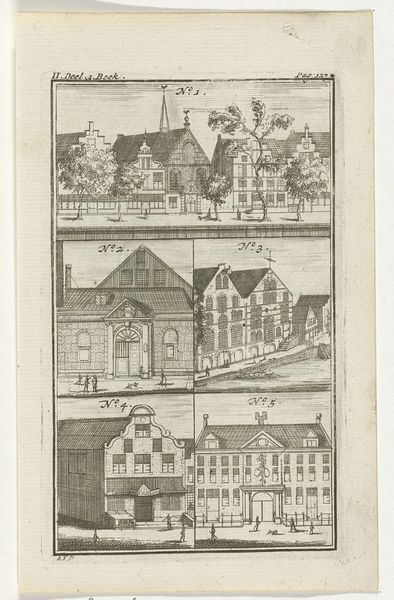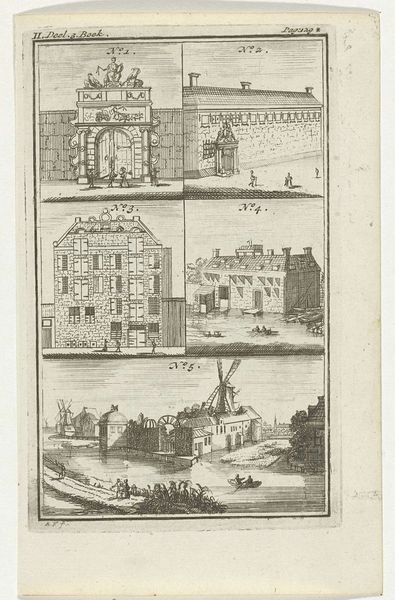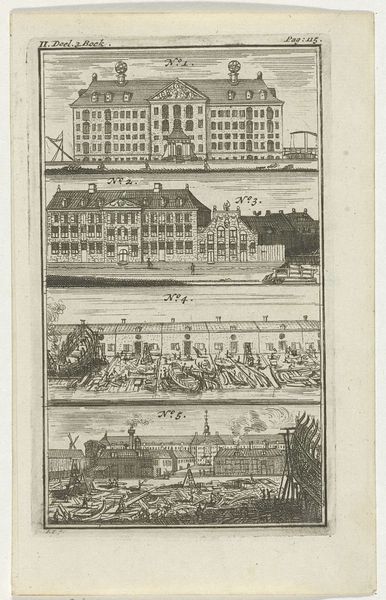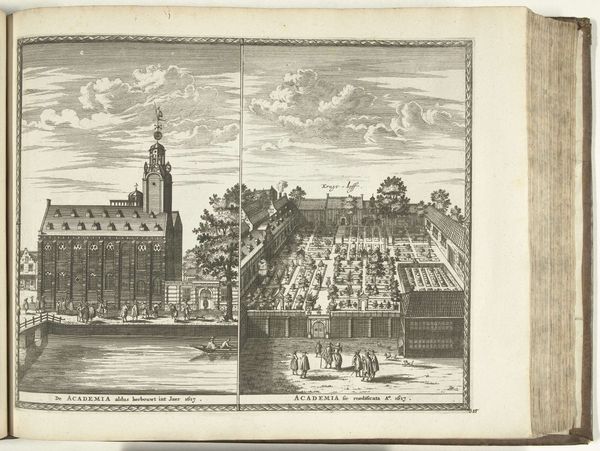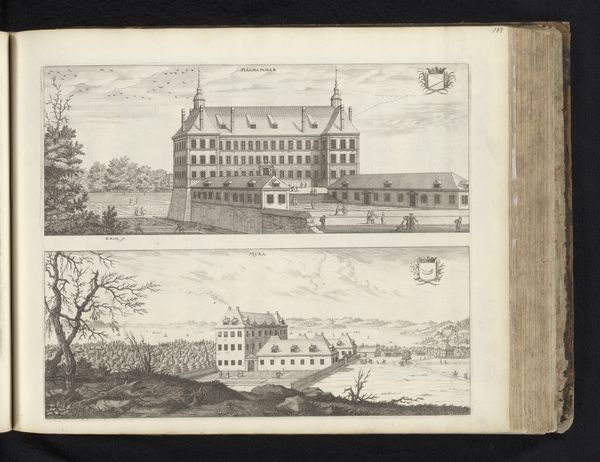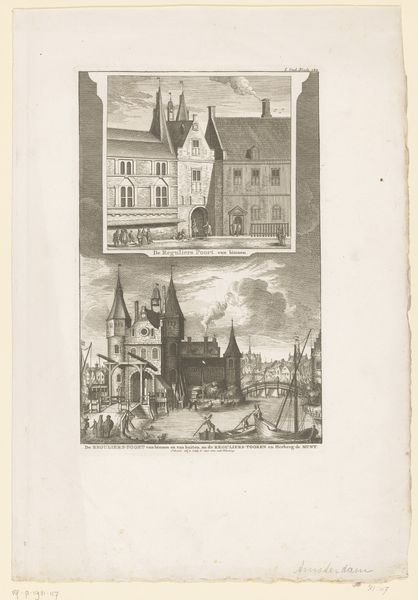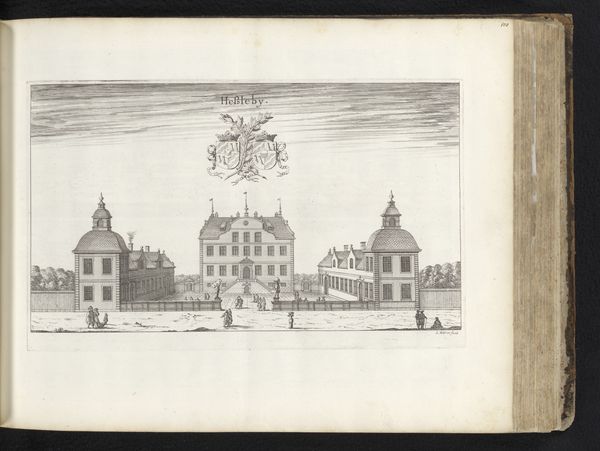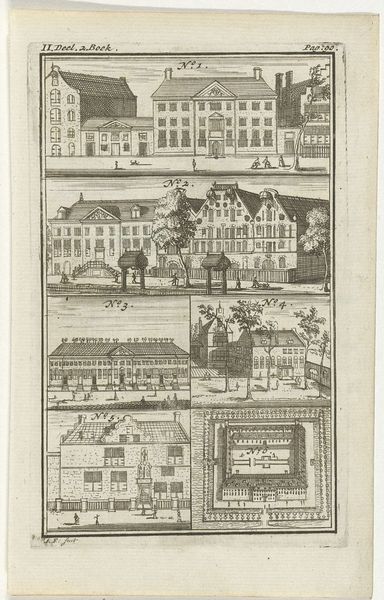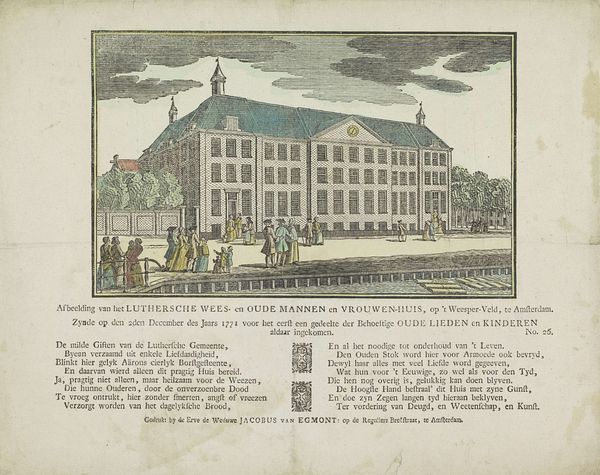
print, engraving, architecture
#
dutch-golden-age
# print
#
landscape
#
cityscape
#
engraving
#
architecture
Dimensions: height 154 mm, width 96 mm
Copyright: Rijks Museum: Open Domain
Editor: Here we have a page of illustrations from 1723, credited to Roeland van Leuve. It’s an engraving, and it features a series of little cityscapes and architectural details. It gives off the impression of wanting to meticulously document all the features of the city at this period. How would you interpret this page? Curator: For me, this print acts as a form of proto-photography, meticulously cataloging urban life, but also revealing societal structures of the Dutch Golden Age. Who was represented, and who was left out? For example, do you notice a clear divide between commercial infrastructure and leisure spaces? The composition separates labor and commerce from more idyllic, natural settings along the water, for instance. Editor: I see what you mean. There are ships being loaded, commerce being undertaken, then, lower down, a pleasure boat on the water! But also a grand, very formal looking civic building in one of the squares, it's like a celebration of this economic structure. How might this representation play into Dutch identity at the time? Curator: Precisely! Consider that this was created during a time of immense colonial power. Visual documentation, like this print, reinforced notions of Dutch prosperity and dominance, both for internal consumption and external projection. But this is just a single page within a much bigger book – What narrative is being told? And, from a feminist perspective, where are the women within this bustling city? Are they mere bystanders, or does their absence suggest a more complex negotiation of public and private spheres? Editor: It is fascinating to consider this page of illustrations not just as an architectural record but also as a record, of who has agency and presence in civic life. Thank you! Curator: Indeed. And how images, even seemingly objective ones, can reflect and reinforce existing power dynamics. Food for thought!
Comments
No comments
Be the first to comment and join the conversation on the ultimate creative platform.
